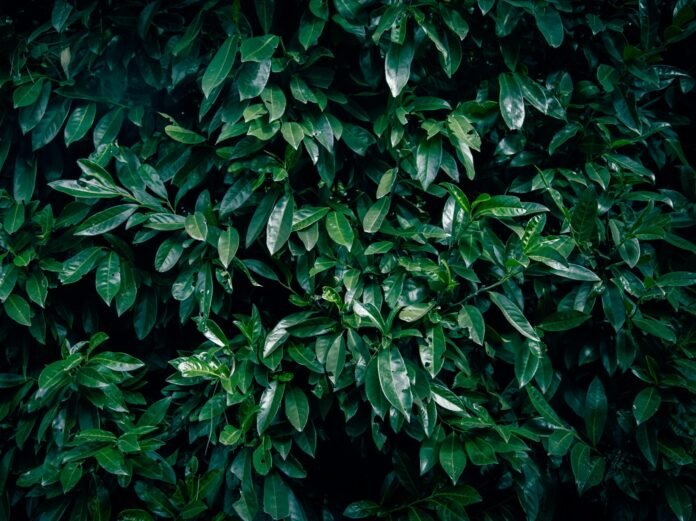Alexandrian Laurel (Calophyllum inophyllum) Family: Clusiaceae
Also known as: Alexandrian Laurel Balltree, Beach Calophyllum, Beach Touriga, Beauty Leaf, Borneo-Mahogany, Dilo Oil Tree, Indian Laurel, Indian Doomba Oil Tree, Indian-laurel, Laurelwood, Mastwood, Red Poon, Satin Touriga, and Tacamahac Tree
Origin: Tropical East Africa to eastern Polynesia
“Laurel would be incomplete without the addition of the word ‘Hardy,’ right?” (“Huh? Go ask your Dad!”)
Yes, with seemingly more names than a Cincinnati hot check artist, as truly and semantically regards the preceding silliness – actually, it is! The Alexandrian Laurel is a rather tough character able to handle both heavy, sustained rainfall and extended droughts, is salt tolerant – beachside residents take note – handles heavy, hard wind, but is susceptible to brush fires – but, come to think of it, who isn’t?
The Alexandrian Laurel’s “official” name is derived from the Greek translation of “beautiful leaf.” (Thus, in Greek, I must be a παρανοημένος γέρος συγγραφέας (paranoiménos géros syngraféas) or in the Latin-based Linnaeus binomial nomenclature system of identification, a demens scriptor! Well, I’ve been called worse!)
The landscaping applications of this tropical evergreen tree, with its glossy green leaves and cream-colored flowers, are diverse. They range from serving as an attractive, tall hedge, wind break next to tennis courts to simple placement as an urban street tree – reaching thirty-five to fifty feet after fifty years or so. (Interestingly, its wood is valuable, being used for boat building and cabinet work.)
Among its traditional medicine applications in the Cook Islands, Fiji, Indonesia, the Philippines, Samoa, Tonga, and the Society Islands is its use as a solution for eye injuries, blurry vision, fever, relief from muscle pain, skin sores, rashes, and rheumatism. There, among other things, it is also used to treat burns, cure an array of skin problems, heal stretch marks, and even help with pimple problems!
The pure oil extracted from the seeds of its, so named, Tamanu Almonds, are, in themselves, renowned for their potential skincare benefits, including great moisturizing, anti-inflammatory, and wound-healing properties. This, as I understand, for over 2,000 years, has been mixed with monoi (created from the Tahitian Gardenia, [Gardenia taitensis], the national flower of Tahiti) for superlative haircare.
In India, botanical scientists say that the bark is an anodyne (a drug used to lessen pain), astringent, emollient (skin softener), vulnerary (wound healer), diuretic, and has purgative capacities, while the seed oil is anodyne, diuretic, and demulcent. They further assert that its oil can reduce rheumatic arthritic pain, its leaf juice can be used to treat cataracts, and the bark resin is good for helping heal wounds.
I’ve also read that both its bark and resin have been used traditionally to treat respiratory conditions such as chronic bronchitis and phthisis (a progressively consumptive condition – pulmonary tuberculosis).
In fact, many of the plants in this genus are used in traditional medicine for the treatment of eye infections, gonorrhea, heat stroke, hemorrhoids, hypertension, infections, inflammation, leprosy, malaria, migraines, nephritis, pain relief, scarring reduction, sore eyes, skin infection, ulcers, vertigo, wounds of various nature and insect bites and stings.
Beyond that, its seed oil has been used for centuries to treat burns, joint pain, rashes, rheumatic pain, skin ailments, vaginal discharge, and blood after childbirth.
But, as the old expression goes – “What have you done for me lately?” Well, not naturally negative or of a naturally opposing disposition, they are – ethno-pharmaceutically – anti-cancer, anti-HIV, anti-viral, anti-tumor, anti-microbial, anti-bacterial anti-inflammatory, anti-microbial, anti-neoplastic, anti-platelet, anti-psychotic, anti-oxidant, anti-aging, anti-leukemic, anti-malarial, anti-coagulant and anti-feedant (a substance that can prevent or delay certain types of cell damage caused by free radicals).
Additionally, they’re analgesic and photoprotective (meaning they provide protection from the damaging effects of sunlight – particularly ultraviolet (UV) radiation with its harmful effects, such as skin damage, photo-aging, and skin cancer). And right up there on the topside of benefits, it’s said to potentially increase lifespan in that it seems to have the capacity to improve cell viability – hence, suggesting potential anti-aging properties!
The emetic and purgative gum extracted from the plant is used for the treatment of wounds and ulcers, while an infusion of gum, bark, and leaves can be employed for sore eyes.
In skin care, its seed oil has attained a degree of renown for its ability to act as an anti-aging ingredient, treating visible signs of aging and leaving a youthful glow. . . . can I bathe in it?
Did I mention that its fruit can be used as a mosquito repellent when burned?


